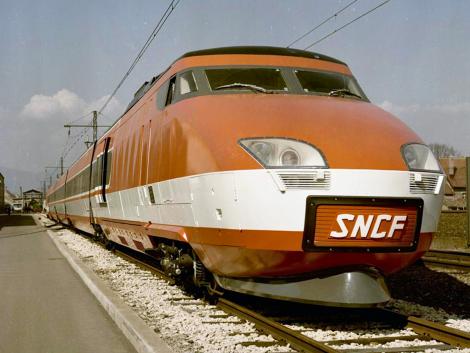In Australia, the development of a HSR network has been debated throughout the country and in the Federal Parliament since the 1980’s with feasibility plans and investigations undertaken to connect major capital cities on the Eastern seaboard of Australia. Only just recently has the Commonwealth government taken the initiative and passed the High-Speed Rail Authority Bill 2022, marking the start of the High Speed Rail Authority in November 2022. Established in June 2023, the HSRA will now be supporting and developing a high-speed rail network in Australia connecting major cities to significant regional locations.
Chronology & Evolution of High-Speed Rail networks Worldwide
1960’s & 70’s

The origins of high-speed rail can be traced back to Japan, with the launch of the world’s first bullet train, the Shinkansen, in 1964.
It revolutionized train travel by boasting speeds of up to 210 km/h (130 mph) connecting Tokyo and Osaka in close to half the time it would previously take, making it in just over 3hrs.
1980’s

Following Japan’s success, high-speed rail technology spread to other countries, and initially in France, which introduced the TGV (Train à Grande Vitesse) in 1981, capable of reaching speeds over 300 km/h (186 mph). This marked the beginning of high-speed rail systems in Europe.

1990’s up to 2000
Over time and during 1990’s, high-speed rail networks expanded across Europe, connecting major cities with trains that reached remarkable speeds. Spain’s AVE, Germany’s ICE, and Italy’s Frecciarossa are some notable examples of high-speed rail networks that have since evolved, showcasing innovation in train design and infrastructure technologies.
By the end of the 20th century, High-speed rail gained popularity globally, with countries in Asia, the Middle East, and even North America investing in expanding their own networks. China’s expansive high-speed rail system, known as the CRH, became the world’s largest by far, covering more than 35,000 kilometres.

document courtesy B1M copyright “The unstoppable growth of China’s High Speed Rail”
Since 2010…
In the past 15 years in Europe, with the European Commission setting pro-rail expansion policies, high-speed rail has increasingly competed with aviation as a preferred mode of transport. Equally in China, the central government has been splashing out on the expansion of the HSR network at an incredible rate – building and operating an increasingly vast network of over 30,000 kms in less than 20 years!

So what are the reasons why HSR has been so popular in expanding so much in some parts of the world…these are just the top 10 benefits.
Top 10 Benefits
The key benefits and opportunities for global high-speed rail when compared to alternative transport are:
- Environmental Sustainability: High-speed rail produces significantly fewer greenhouse gas emissions compared to air travel, making it a more environmentally friendly mode of transportation. It can play a crucial role in reducing carbon footprints and combating climate change.
- Energy Efficiency: Trains have higher energy efficiency compared to planes, as they use less fuel per passenger mile. High-speed rail systems can make efficient use of electricity, with advancements in regenerative braking and renewable energy integration.
- Reduced Congestion: By shifting passenger traffic from air to rail, high-speed trains can alleviate congestion at airports and in the skies. This can lead to smoother airport operations, fewer flight delays, and less air traffic.
- Enhanced Regional Connectivity: High-speed rail networks offer improved connectivity within and between cities, connecting regions that might not have airports or direct flight options. They can boost intercity and regional development, leading to economic growth by integrating various local economies.
- Accessibility and Convenience: Rail stations are often located in city centers, allowing passengers to travel conveniently without the need for additional journeys to and from airports located farther away. High-speed rail terminals offer seamless transportation connections, improving overall accessibility for passengers.
- Time Savings: While travel times may vary, high-speed rail can be faster or competitive with short-haul air travel for distances up to 500 miles. By eliminating airport security procedures, train travel can be less time-consuming, allowing passengers to make better use of their valuable time.
- Comfort and Productivity: High-speed trains offer more space and comfort compared to airplanes, with amenities such as large seats, workstations, onboard Wi-Fi, and the ability to move around freely. These features enhance productivity and provide a more enjoyable travel experience.
- Safety and Reliability: Rail travel is generally considered safer than air travel, with fewer accidents and incidents. High-speed rail systems are highly regulated and incorporate advanced safety measures, making them a reliable mode of transportation.
- Economic Development and Job Creation: The implementation of high-speed rail projects can drive economic development, job creation, and investment opportunities. Construction, manufacturing, operation, and maintenance of these systems provide employment and stimulate local economies.
- Social and Cultural Connectivity: High-speed rail can foster cultural exchange and social connectivity by facilitating easy and affordable travel between cities, regions, and neighboring countries. It promotes tourism, business partnerships, and a sense of unity among diverse populations.
These benefits and opportunities showcase the huge potential of high-speed rail as an attractive and most importantly sustainable alternative to aviation, enabling efficient and interconnected transportation systems worldwide.

** Extract from UIC report on HSR Carbon emissions report
There is an approximate factor of 14 between Air travel GHG emissions and HSR travel measured in g CO2/ pax Km on equivalent journey routes in France (see chart above).
Surely now with Australia committed to achieving net zero CO2 emissions by 2050, the future of HSR infrastructure has to be assessed positively against enabling this target to be achieved with a new alternative transport network. Given the most commonly suggested route for a first major connection is Sydney to Melbourne, which happens to be the world’s sixth busiest air corridor as of 2022…you would think the southern cross stars are going to be shining their brightest…and visible from Canberra…
